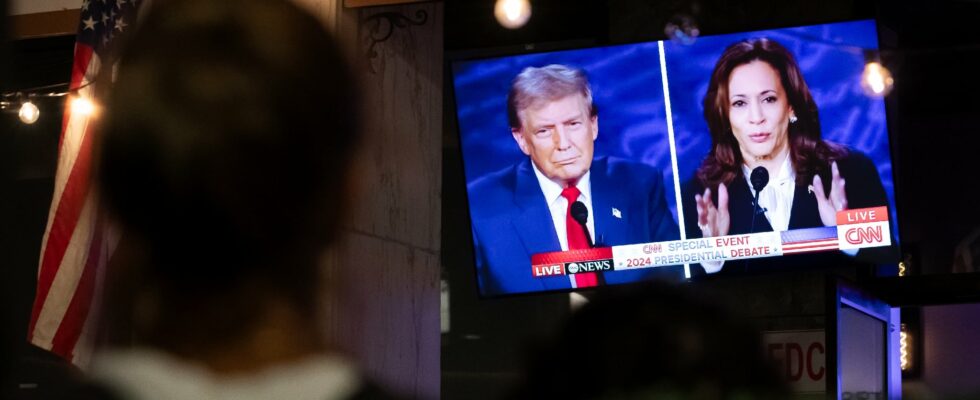27 days before the American presidential election, what do polling institutes say about the duel between Kamala Harrris and her rival Donald Trump? Tuesday October 8, an Ipsos survey carried out for Reuters indicated that the gap between the current Democratic vice-president and the Republican was narrowing, the latter obtaining 46% of voting intentions, against 43% for the billionaire, when the latter was six points behind in a study published two weeks earlier.
This three-point gap, which is also found in the latest October 6 Siena College poll for the New York Times (NYT)however, corresponds to the margin of error, so that it is difficult to be certain about the outcome of the November 5 election. The New York daily nevertheless reveals that, for the first time, a majority of voters consider that the mark of change would rather be embodied by Kamala Harris than by Donald Trump.
Economic issues at the heart of the campaign
What themes could tip the scales in favor of one side or the other? Respondents say the biggest problem facing the United States right now is the economy, and more voters (44%) think Donald Trump is more credible on the issue. improvement in purchasing power than Kamala Harris, who obtains only 38% favorable opinions in the Reuters survey. Moreover, 42% of people surveyed by Siena College declared “that Donald Trump’s policies had helped them personally, compared to only 22% regarding those of Joe Biden”.
A majority of those surveyed also trust the Republican more than the Democrat when it comes to improving the job market, the financial situation of Americans, or on the issue of taxes.
The “change” candidate
However, according to Reuters, those surveyed more easily believe that the Democrats will be able to reduce inequalities between the rich and the poor. Moreover, according to the NYTa majority also indicates that Kamala Harris is more inclined to “care about people like them”, and for the first time, that she is the candidate who, according to those surveyed, most embodies change (46 against 44 %).
This belief is even more important among non-white voters (61% versus 29%) and among young people (58% versus 34%). Kamala Harris is also gaining popularity among “older” voters and has started to gain ground among Republicans: 9% said they planned to support her, up from 5% last month. In terms of sympathy capital, this time, “Kamala Harris, whose campaign promoted videos and memes showing her laughing, joking and dancing, is considered the funnier of the two candidates,” says THE New York Times.
Divide on the question of immigration
Another divisive issue is immigration: “Some voters may be swayed by Trump’s claims that immigrants present illegally in the country pose a danger to public safety – although those claims have been widely discredited by studies”, reveals the Ipsos/Reuters survey. This does not prevent 53% of those questioned from agreeing with this statement. “Voters were more divided on this issue in a May poll, where 45% agreed and 46% opposed,” the study notes.
Doubts about Trump’s mental acuity
If there is one quality on which Kamala Harris stands out from her rival without too many problems, it is that of alertness. Voters have in fact “more confidence (55%) in Harris’ mental acuity than in Trump’s (46%)”, that is to say, a greater number of respondents indicate that the Democrat is “mentally sharper and able to take on challenges” than her competitor (Reuters), and more trustworthy, says the NYT.
However, it should be noted that with less than a month before the election, and while the gap is closing between the two candidates, the outcome of the election remains uncertain. The group of undecideds decreased slightly to reach 17% of voters, compared to 20% at the beginning of September (NYT/Sienna). But the fate of the United States could be decided in the seven pivotal states, likely to swing the vote.
